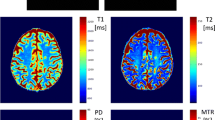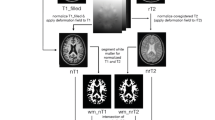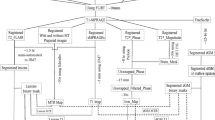Abstract.
The clinical course of multiple sclerosis (MS) is highly variable ranging from benign to aggressive, and is difficult to predict. Since magnetization transfer (MT) imaging can detect focal abnormalities in normal-appearing white matter (NAWM) before the appearance of lesions on conventional MRI, we hypothesized that changes in MT might be able to predict the clinical evolution of MS. We assessed MR data from MS patients who were subsequently followed clinically for 5 years. We computed the mean MT ratio (MTr) in gray matter, in lesions identified on T2-weighted MRI, and in NAWM, as well as in a thick central brain slice for each patient. Patients were divided into stable and worsening groups according to their change in Expanded Disability Status Scale (EDSS) scores over 5 years. We calculated the sensitivity, specificity, predictive value, and odds ratio of the baseline MTr measures in order to assess their prognostic utility. We found significant differences in baseline MTr values in NAWM (p = 0.005) and brain slice (p = 0.03) between clinically stable and worsening MS patients. When these MTr values were compared with changes in EDSS over 5 years, a strong correlation was found between the EDSS changes and MTr values in both NAWM (SRCC = −0.76, p < 0.001) and in the brain slice (SRCC = 0.59, p = 0.01). Baseline NAWM MTr correctly predicted clinical evolution in 15/18 patients (1 false positive and 2 false negatives), yielding a positive predictive value of 77.78 %, a negative predictive value of 88.89 %, and an odds ratio of 28. The relationship between 5-year changes in EDSS and MTr values in T2 weighted MRI lesions was weaker (SRCC = −0.43, p = 0.07). Our data support the notion that the quantification of MTr in the NAWM can predict the clinical evolution of MS. Lower MTr values predict poorer long-term clinical outcome. Abnormalities of MTr values in the NAWM are more relevant to the development of future patient disability than those in the T2-weighted MRI lesions.
Similar content being viewed by others
Author information
Authors and Affiliations
Additional information
Received: 3 May 2001, Received in revised form: 11 October 2001, Accepted: 22 October 2001
Rights and permissions
About this article
Cite this article
Santos, A., Narayanan, S., de Stefano, N. et al. Magnetization transfer can predict clinical evolution in patients with multiple sclerosis. J Neurol 249, 662–668 (2002). https://doi.org/10.1007/s00415-002-0686-4
Published:
Issue Date:
DOI: https://doi.org/10.1007/s00415-002-0686-4




